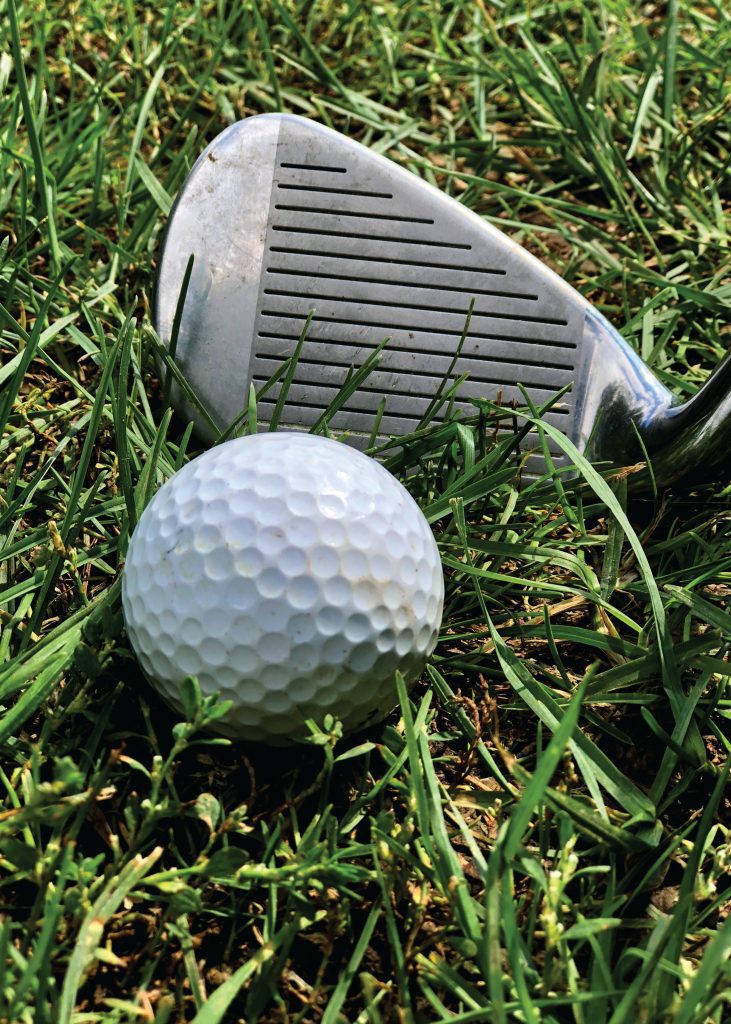By Ed Thompson
 A few weeks ago, Mark Miller and I had the chance to play golf at the Old White course at the Greenbrier, thanks to the kindness of Susan Sharp Campbell. It was a great day although I did not play well. While I remember enjoying playing in the sand as a child, spending time hitting (or perhaps more accurately “trying to hit”) out of sand traps is not that much fun as an adult.
A few weeks ago, Mark Miller and I had the chance to play golf at the Old White course at the Greenbrier, thanks to the kindness of Susan Sharp Campbell. It was a great day although I did not play well. While I remember enjoying playing in the sand as a child, spending time hitting (or perhaps more accurately “trying to hit”) out of sand traps is not that much fun as an adult.
One of the best parts of the day was the golf cart. I know that sounds strange, so let me explain. Part of it is due to the fact that each cart is equipped with GPS equipment that displays the yardage to the pin, the front of the green, the back of the green, and to any particular hazard, such as the aforementioned sand traps, from wherever you stop on the course. Now if I knew how far I was hitting my irons, which I did back in the day when I was playing regularly, this information would have provided me with a tremendous advantage.
What I really enjoyed about the golf cart, though, was the fact that at each hole, it gave you a particular historical snippet about that location or the course in general. For example, this was the last hole on which Sam Snead got a hole-in-one, or when President Eisenhower played here in March 1959, the temperature was 40 degrees. (That may not be the exact year or the exact temperature; I’m going by memory since I didn’t think to take notes.)
That got me thinking about history. They have been playing golf at that particular location for more than 100 years. Over the years, golf equipment has changed tremendously. Back then, the shafts of golf clubs were probably made of hickory wood. Today, they may be made of graphite or titanium. Most players back then used clubs called spoons, mashies and niblicks. Now, they use sand wedges and pitching wedges. The drivers have oversized heads, and putters come in all different shapes and sizes. Back then, players would have used caddies. Now, most use golf carts. Despite all the changes, the game remains the same and scores are probably in the same range too, especially if you can stay out of the sand traps.
This also got me thinking about the church. Over the past 100 years, the translations of the Bible we use have changed. Men’s and women’s fashions have changed. Even our polity has changed, although I think you can argue that our core principles have stayed the same. However, the gospel has not changed even though how we proclaim the gospel keeps evolving. While there may be some folks who are still using flannel boards, filmstrip projectors, and mimeograph machines – and if you are, God bless you, and if you don’t know what those things are, you can google them on your smartphone – we are livestreaming, using Zoom meetings, and watching worship services on YouTube. Many of us were not doing those things before March of this year. Bottom line, we are in the midst of change.
We could still play golf with wooden shafted clubs with funny names and use gutta-percha golf balls if we wanted to. We could still use flannel boards and filmstrip projectors in church if we wanted to. We have choices. In this time, maybe the choices we are facing as a church feel like they have been forced upon us, and maybe we spend a lot of time, perhaps too much time, longing for the good old days, but maybe these changes are just part of the natural evolution of the church, no different than the introduction of the printing press, the flannel board, or the Revised Standard Version of the Bible. Maybe we can embrace the choices to do ministry differently as opportunities to be better, to reach more people, to communicate more effectively, to follow more closely as Jesus leads us into the future. These are challenging times, but I think God is also giving us opportunities to share the gospel with those around us in these times – and probably answering the prayers that we have made for such opportunities – if we can just see it that way.

Amen, Ed! This pandemic has uncovered problems with our structures, but this uncovering is perhaps providing the needed jumpstart for all of us to re-evaluate and improve those structures.